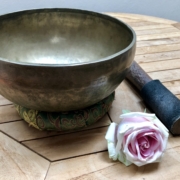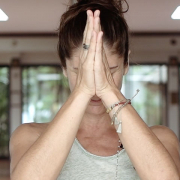 https://samahitaretreat.com/wp-content/uploads/2023/11/IMG_1290-2-scaled.jpg
1920
2560
Kirsten Mia
http://samahitaretreat.com/wp-content/uploads/2024/01/samahita-logo-v2.svg
Kirsten Mia2023-11-21 21:09:402023-11-21 21:09:40Music makes the world go round!
https://samahitaretreat.com/wp-content/uploads/2023/11/IMG_1290-2-scaled.jpg
1920
2560
Kirsten Mia
http://samahitaretreat.com/wp-content/uploads/2024/01/samahita-logo-v2.svg
Kirsten Mia2023-11-21 21:09:402023-11-21 21:09:40Music makes the world go round!You are the stars wrapped in skin
You are the stars wrapped in skin!
No, I’m not kidding… When you break down life into its simplest form, using the elements, we are indeed just a combination of the 6 elements: carbon, hydrogen, nitrogen, oxygen, sulfur and phosphorus. So human beings ARE made of stardust! In today’s blog we will also look at the historical development and knowledge of the elements to get a clearer picture of ourselves, humanity and life on Earth through deeper understanding and different perspectives.
The science stuff…
Most of us will have learned basic chemistry/the periodic table of elements in school, so let’s first look at the building blocks of matter and life through the “western” science perspective, which has developed into what we learn in school/university today as physics, chemistry, math, biology, medicine and astronomy.
The definition of science: systematic knowledge of the physical or material world gained through observation and experimentation.
Prior to the scientific revolution in Europe in the mid 1500’s, much of what we understood about the natural world and the universe were assumptions, theories, ideas or ancient wisdom passed down from generation to generation or through various religions and tribal belief systems. The improvements and developments of the printing press gave rise to a whole new era in the sharing of knowledge and information. So, from the modern era of science and technology we have a very technical, systematic and methodical approach to how we dissect, discover and look at the natural world and beyond. It is however important to keep an open and flexible mind, even when we have “evidence or proof” to back our theories up, as we continue to evolve and discover new things along the way. And it’s all interconnected in some way!
97% of us human beings are made up of the 6 main elements as mentioned in the intro paragraph above. (CHNOPS – an easy to remember acronym) These elements are made up of varying combinations of atoms (which are protons and neutrons surrounded by a cloud of electrons), which form chemical bonds which then make up molecules, crystals and thus the various elements. The ability of atoms to attach and detach with each other is responsible for most of the physical changes observed in nature. Now, even smaller than electrons, neutrons and protons are quarks, of which there are 6 types. Quantam physics/theory is the study of quarks and many of the things we cannot yet see or explain fully, such as consciousness… super interesting stuff indeed! Let’s now go back in time to see how it all began.
Alchemy
The medieval chemical science and speculative philosophy that focused on the attempt to change less valuable metals into gold, to find a universal cure for disease, and to discover a means of prolonging life indefinitely is called alchemy. It was practiced in much of the ancient world, from China and India to Greece. Alchemy migrated to Egypt and was later revived in 12th-century Europe through translations of Arabic texts into Latin. Medieval European alchemists made some useful discoveries, including mineral acids and alcohol. The revival led to the development of pharmacology and to the rise of modern chemistry. The gold-making processes of alchemists were finally discredited, but not until the 19th century. (Merriam Webster)
The first written texts on alchemy date back to the first few centuries AD. Alchemy holds the ancient Greco-Roman belief that everything is composed of 4 elements: earth, air, water and fire. (ether came later) The elements were proposed to explain all the complexities of nature, the cosmos and life in its simplest form. Ancient alchemy has had a strong influence in modern-day science.
Central Africa
Over in Central Africa, in today’s Congo, the Kongo Cosmogram has existed for centuries, even prior to European contact in 1482. It is an emblem that represents their people’s understanding of creation and the cycle of life. At its 4 points, stand earth, air, water and fire. It shows the seasons, the 4 stages of life, the physical and spiritual worlds. An important aspect of Bakongo cosmology is the sun and its movements. Archeological findings in the US show evidence of slaves using the symbol, where it was carved in church basements and engraved on pottery.
Ayurveda – The science of life
This ancient 5000-year-old practice has its origins in the Indian subcontinent and is still practiced widely today in India and Nepal, where about 80% of the population report using it. The 5 elements of Ayurveda are earth, air, wind, fire and ether. One’s health outcomes and treatments are determined by keeping things balanced and in harmony. It denotes that humans are a combination of the 5 elements. You find out your combination/prakriti and this is then used as a guide to get to the root cause of ill health and disease, by understanding how these parts are at play. The doshas (Vata, Pitta, Kapha) are associated with certain attributes.
Vata – Air and Ether (Dry, Light, Cold, Rough, Subtle, Mobile, Clear)
Pitta – Fire and Water (Hot, Sharp, Light, Liquid, Mobile, Oily)
Kapha – Water and Earth (Heavy, slow/dull, cold, oily, liquid, slimy/smooth, dense, soft, static, sticky/cloudy, hard, gross)
Traditional Chinese Medicine
In TCM, everything in the Universe from the smallest atom to a blue whale to the solar system itself, are said to be composed of some combination of the 5 elements: fire, earth, water, wood and metal. Early mention of the 5 element theory dates back to 300BC. The elements are associated with our health and wellbeing, energies, personality traits, emotions; with a deep connection to nature. Similar to Ayurveda, the practice looks for the root cause of disease. Today it used by many people in combination with modern medicine. Some of the contributions made by TCM include: updated data on toxicity, adverse reactions, quality assurance, and herbal medicine standardization. Herbal medicines as an alternative to antimicrobial resistance in prescription drugs.
Like in Ayurveda, you are looking to find harmony and balance within the system. Our Chi, our vital energy, guides our physical and mental/emotional processes and we work with it to maintain balance and equilibrium.
To wrap it up…
The creation of the Universe and life on Earth are one of the great mysteries of the world, and we human beings, out of our natural curiosity and will to live and thrive, will perhaps always be searching for the answer to this question. Will we EVER know? Do we NEED to know? You and I may NEVER know, but what DOES matter above it all, is how we live our lives, day to day. So, I’ll leave it here and let you decide what to believe in… All I wish for from us carbon-based lifeforms, is that we are kinder to each other, and to our Mother Gaia, as we are all interconnected!
Big love! xxx Kirst
References:
https://press.sdss.org/the-elements-of-life-mapped-across-the-milky-way-by-sdssapogee/
https://sciencing.com/list-describe-four-major-classes-molecules-10269.html
https://en.wikipedia.org/wiki/Classical_element
https://en.wikipedia.org/wiki/Scientific_Revolution
https://en.wikipedia.org/wiki/Atom
https://en.wikipedia.org/wiki/Kongo_cosmogram
https://www.healthline.com/health/mind-body/what-are-the-five-elements
https://vibranthealthayurveda.com/the-five-elements-of-ayurveda/
More from the Samahita Blog







